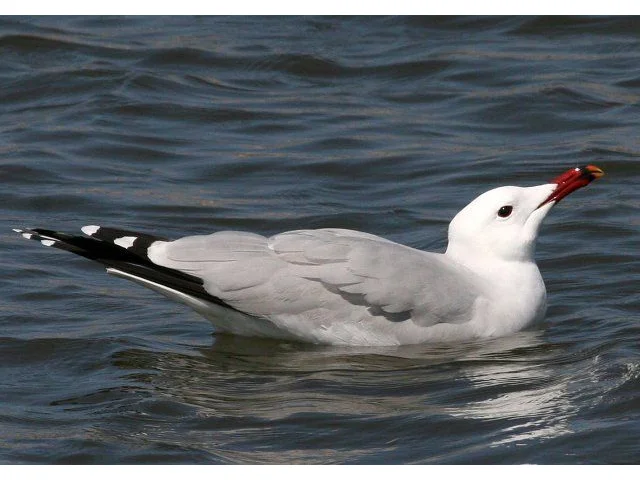Spain radically increases Marine Protected Areas
e85bfeaa-801f-4a54-be05-40ec5f8c7604

The Spanish government's agricultural ministry has introduced landmark conservation legislation to increase its Marine Protected Areas 20-fold.
The Agricultural Ministry officially established 39 new marine protected areas this week under the European Natura 2000 network, marking a very important moment in marine conservation. The new sites are classed as ‘Special Protection Areas for Birds’ (SPAs) under the European Birds Directive.
The SPAs will offer protection to seabirds while they are at sea, complementing the existing network of sites on land, as well as other marine wildife.
Spain, with its Atlantic and Mediterranean coastlines and islands, holds important numbers of breeding European seabirds, which include Europe’s most threatened seabird, Balearic Shearwater, and other Mediterranean endemics, such as the Yelkouan Shearwater and Audouin’s Gull. Today’s announcement is the culmination of many years of hard work by BirdLife’s Spanish partner SEO/BirdLIfe, which has played a major role in the process. Each of the 39 sites closely mirror the Marine Important Bird Areas identified by the organisation, following nearly a decade of scientific research.
Previously, Spain’s network of protected sites for seabirds was made up mostly of small sites at colonies and along coasts and islands. These sites mostly protect seabirds while on land, but do not protect them out at sea, where they spend the majority of their time. These new sites, many of which are large and offshore, will add an additional 31,000 miles2 to Spain’s protected area network for birds, a whopping 20-fold increase.
"Today’s announcement is extremely important," said Asunción Ruiz, Director of SEO/BirdLife. "Now seabirds can be protected when they venture away from the Spanish coast. Carefully managed, these sites could make a real difference to the recovery of our threatened seabirds."
The ground work carried out by SEO/BirdLife to identify these sites involved many years of scientific research, tracking seabirds and understanding their behaviour at sea. Across Europe, Marine Important Bird Areas act as a ‘shadow list’ of sites which should be protected under EU law.
"It is extremely promising that Spain has moved to designate offshore sites, and it is imperative for seabird conservation that other countries in Europe follow their example," added Marguerite Tarzia, European Marine Conservation Officer at BirdLife. "The addition of these sites means that Spain has gone from lagging behind other EU countries, to being one of the regional leaders in seabird protection at sea. It is important that the next steps include strong and effective management of sites, to ensure that the positive gains made today are followed through with real conservation outcomes."
The Agricultural Ministry officially established 39 new marine protected areas this week under the European Natura 2000 network, marking a very important moment in marine conservation. The new sites are classed as ‘Special Protection Areas for Birds’ (SPAs) under the European Birds Directive.
The SPAs will offer protection to seabirds while they are at sea, complementing the existing network of sites on land, as well as other marine wildife.
Spain, with its Atlantic and Mediterranean coastlines and islands, holds important numbers of breeding European seabirds, which include Europe’s most threatened seabird, Balearic Shearwater, and other Mediterranean endemics, such as the Yelkouan Shearwater and Audouin’s Gull. Today’s announcement is the culmination of many years of hard work by BirdLife’s Spanish partner SEO/BirdLIfe, which has played a major role in the process. Each of the 39 sites closely mirror the Marine Important Bird Areas identified by the organisation, following nearly a decade of scientific research.
Previously, Spain’s network of protected sites for seabirds was made up mostly of small sites at colonies and along coasts and islands. These sites mostly protect seabirds while on land, but do not protect them out at sea, where they spend the majority of their time. These new sites, many of which are large and offshore, will add an additional 31,000 miles2 to Spain’s protected area network for birds, a whopping 20-fold increase.
"Today’s announcement is extremely important," said Asunción Ruiz, Director of SEO/BirdLife. "Now seabirds can be protected when they venture away from the Spanish coast. Carefully managed, these sites could make a real difference to the recovery of our threatened seabirds."
The ground work carried out by SEO/BirdLife to identify these sites involved many years of scientific research, tracking seabirds and understanding their behaviour at sea. Across Europe, Marine Important Bird Areas act as a ‘shadow list’ of sites which should be protected under EU law.
"It is extremely promising that Spain has moved to designate offshore sites, and it is imperative for seabird conservation that other countries in Europe follow their example," added Marguerite Tarzia, European Marine Conservation Officer at BirdLife. "The addition of these sites means that Spain has gone from lagging behind other EU countries, to being one of the regional leaders in seabird protection at sea. It is important that the next steps include strong and effective management of sites, to ensure that the positive gains made today are followed through with real conservation outcomes."

